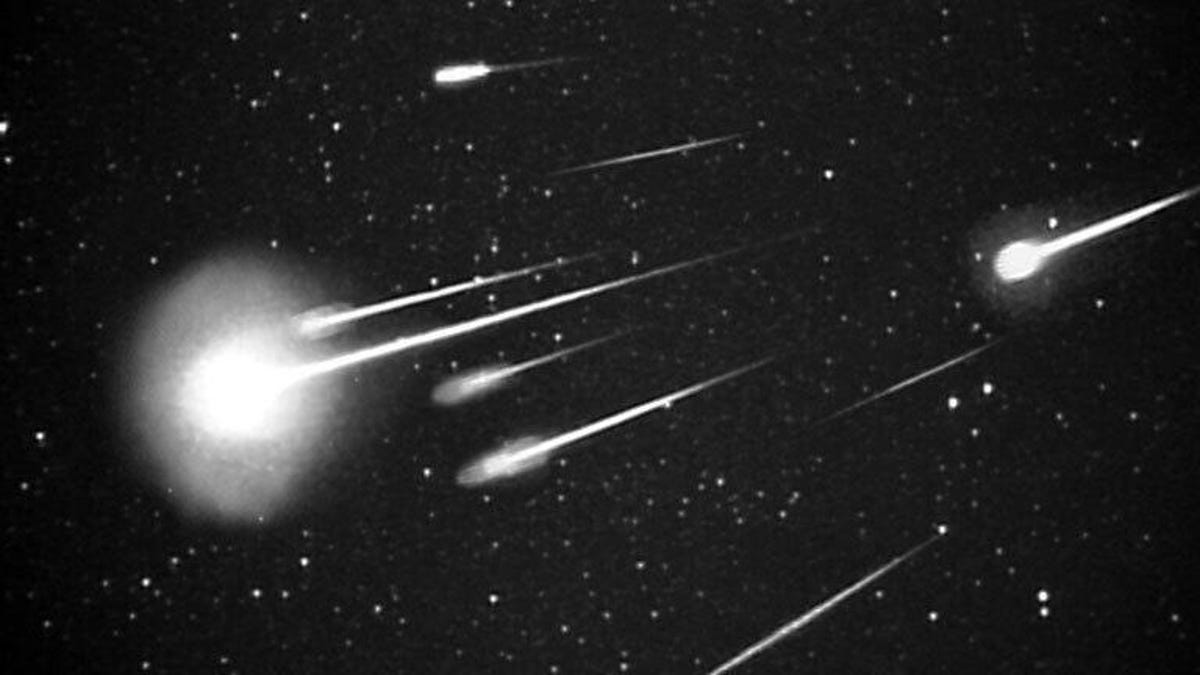Leonid meteor shower 2021 peaks tonight: How to see the fiery display
The Leonids like to dazzle with big bright fireballs and even historic storms every now and then.

The 1999 Leonid meteor outburst caught from above by NASA.
We're deep in meteor shower season now, with the sometimes spicy Leonids set to reach peak activity Tuesday night into Wednesday morning.
The Leonids take center celestial stage as the southern and northern Taurid showers are still winding down in the background and three more major showers (the Geminids, Ursids and Quadrantids) are waiting in the wings for their cues in December.
The source of the Leonids is clouds of dust and debris left behind by the comet 55P/Tempel-Tuttle during its previous swings through the inner solar system. When the little motes and pebbles of space stuff smack into our upper atmosphere, it produces a wide variety of shimmering "shooting stars" and some brighter fireballs as well.
Most years the Leonid meteor shower is a pretty average display of about 15 or so meteors per hour at peak. But sometimes Earth floats through a particularly dense pocket of cometary leavings, resulting in so-called "meteor storms" that can produce hundreds or even thousands of meteors per hour.
The Leonids produced one of the first documented meteor storms in 1833 and the phenomenon was observed again in 1866, 1966, 1999 and 2001. These remarkable events tend to happen when the comet returns for a close pass of the sun and we are passing through a packed pocket of its old rubble at the same time.
"Unfortunately, it appears that the Earth will not encounter any dense clouds of debris until 2099," writes the American Meteor Society. "Therefore, when the comet returns in 2031 and 2064, there will be no meteor storms, but perhaps several good displays of Leonid activity when rates are in excess of 100 per hour. The best we can hope for now until the year 2030 is peaks of around 15 shower members per hour and perhaps an occasional weak outburst when the Earth passes near a debris trail."
The good news for night skywatchers this year is that a weak outburst can still be quite a memorable experience, and even in a normal year, the Leonids are known for producing some bright meteors that can have some pretty persistent trains.
This will also help the Leonids compete with the moon, which will be nearly full for most of the night during the shower's peak this week.
If you're going to venture out and try to catch the show, Wednesday and Thursday morning are likely your best bets. It will be essential to find a location with minimal light pollution, clear skies and a wide view of the cosmos. It's possible to see meteors, especially fireballs, while the bright moon is up. But to increase your chances, consider trying to head outside as the moon is setting in the early morning before sunrise.
Be sure to dress appropriately for the weather in your area, give yourself at least 15 minutes for your eyes to adjust and no less than an hour for the whole experience to maximize your chances of catching something you'll remember. Good luck!

